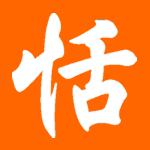I am very curious about why people would randomly select three Chinese characters and tattoo them on.
Here is another example of poorly done tattoo. The top character does not even exist in Chinese characters, and it is completely made up to be look similar to Chinese. The second and third characters are fine, even though I am not impressed with the penmanship, but at least they are are correct and have meanings.
夢 = dream or wish
智 = knowledge or wisdom


The first character is the Japanese simplification of 实 (traditional 實) meaning reality or truth.
ReplyDeleteEven with this though, the combination doesn't make much sense... "real-dream-knowledge"? Sounds like something you'd find on Engrish :)
I was trying to say them out since it seemed like a name
ReplyDeletetranscribed in Hanzi. Ji-mu-chi --> Jamety?? Mi-mu-chi
--> Mitch?
(5 senconds)
Ahhhhha! I got it. They are just meant to mean what they
respectively mean.....
Truth, dream, wisdom.
You cannot choose Hanzi randomly. There are series of
cominations that are well-known like: 真善美
(truethfullness, goodness, beauty), etc.
I don't know if my example above can apply to Chinese though
I guess it does. I speak Japanese as my native language.
実 is the modern way of writing the Japanese name "Minoru" (traditionally written 實).
ReplyDeleteYes, 真善美 is commonly seen in Chinese.
ReplyDeleteThe first character is "jitsu" in Japanese (shí in PinYin) and means in Japanese "reality, truth".
ReplyDelete実can also be pronounced "mi" in japanese and in that case means fruit.
ReplyDelete